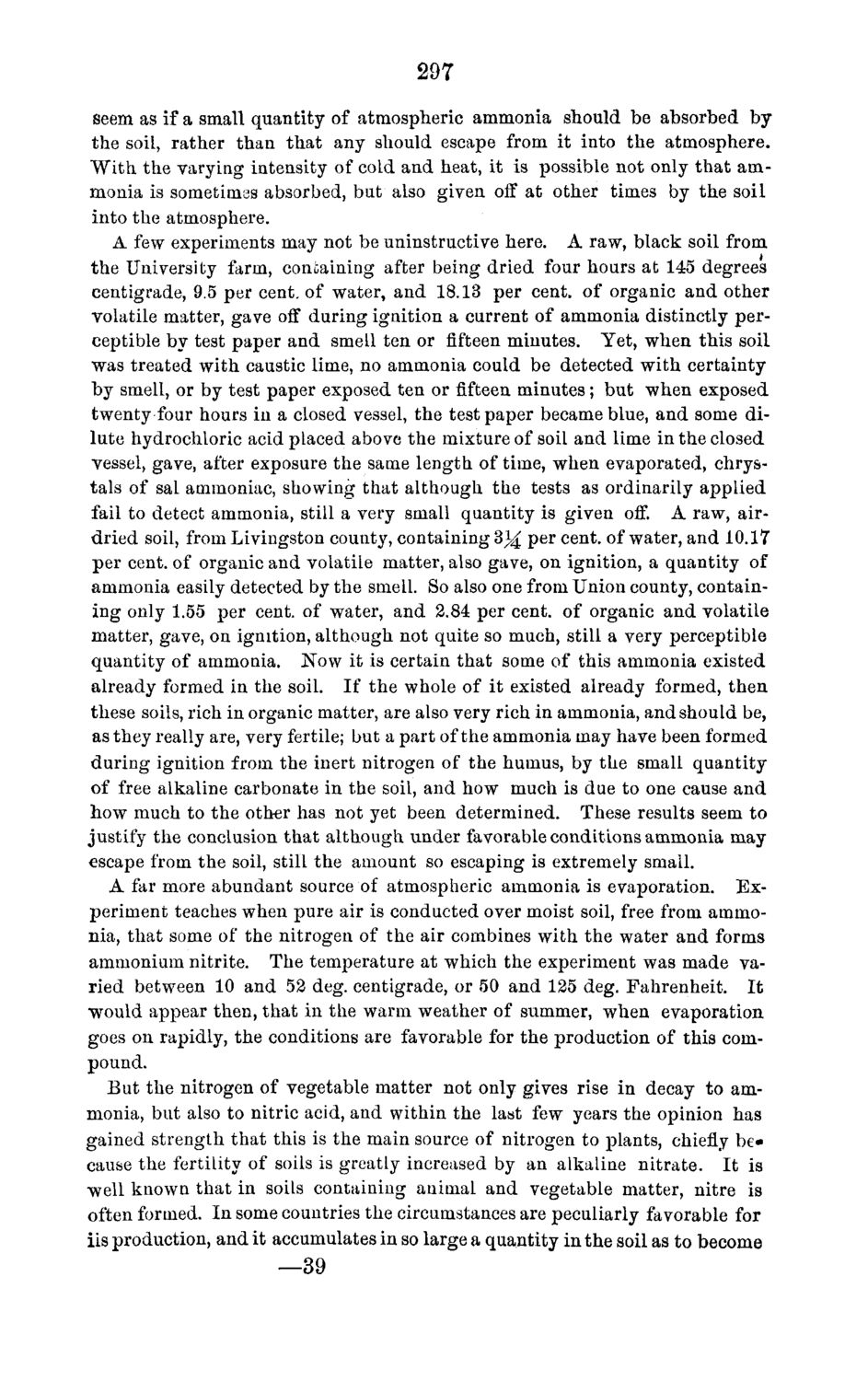| |
| |
Caption: Board of Trustees Minutes - 1870
This is a reduced-resolution page image for fast online browsing.

EXTRACTED TEXT FROM PAGE:
297 seem as if a small quantity of atmospheric ammonia should be absorbed by the soil, rather than that any should escape from it into the atmosphere. W i t h the varying intensity of cold and heat, it is possible not only that ammonia is sometimes absorbed, but also given off at other times by the soil into the atmosphere. A few experiments may not be uninstructive here. A raw, black soil from the University farm, containing after being dried four hours at 145 degrees centigrade, 9.5 per cent, of water, and 18.13 per cent, of organic and other volatile matter, gave off during ignition a current of ammonia distinctly perceptible by test paper and smell ten or fifteen minutes. Yet, when this soil was treated with caustic lime, no ammonia could be detected with certainty by smell, or by test paper exposed ten or fifteen minutes; but when exposed twenty four hours in a closed vessel, the test paper became blue, and some dilute hydrochloric acid placed above the mixture of soil and lime in the closed vessel, gave, after exposure the same length of time, when evaporated, chrystals of sal ammoniac, showing that although the tests as ordinarily applied fail to detect ammonia, still a very small quantity is given off. A raw, airdried soil, from Livingston county, containing 3}£ per cent, of water, and 10.17 per cent, of organic and volatile matter, also gave, on ignition, a quantity of ammonia easily detected by the smell. So also one from Union county, containing only 1.55 per cent, of water, and 2.84 per cent, of organic and volatile matter, gave, on ignition, although not quite so much, still a very perceptible quantity of ammonia. Now it is certain that some of this ammonia existed already formed in the soil. If the whole of it existed already formed, then these soils, rich in organic matter, are also very rich in ammonia, and should be, as they really are, very fertile; but a part of the ammonia may have been formed during ignition from the inert nitrogen of the humus, by the small quantity of free alkaline carbonate in the soil, and how much is due to one cause and how much to the other has not yet been determined. These results seem to justify the conclusion that although under favorable conditions ammonia may escape from the soil, still the amount so escaping is extremely small. A far more abundant source of atmospheric ammonia is evaporation. Experiment teaches when pure air is conducted over moist soil, free from ammonia, that some of the nitrogen of the air combines with the water and forms ammonium nitrite. The temperature at which the experiment was made varied between 10 and 52 deg. centigrade, or 50 and 125 deg. Fahrenheit. I t would appear then, that in the warm weather of summer, when evaporation goes on rapidly, the conditions are favorable for the production of this compound. But the nitrogen of vegetable matter not only gives rise in decay to ammonia, but also to nitric acid, and within the last few years the opinion has gained strength that this is the main source of nitrogen to plants, chiefly because the fertility of soils is greatly increased by an alkaline nitrate. It is well known that in soils containing animal and vegetable matter, nitre is often formed. In some countries the circumstances are peculiarly favorable for iis production, and it accumulates in so large a quantity in the soil as to become —39
| |